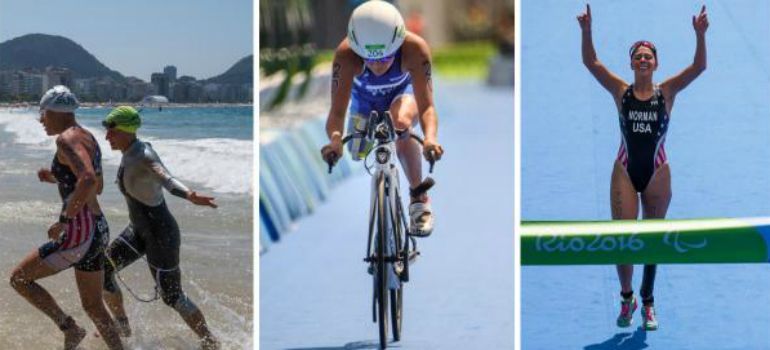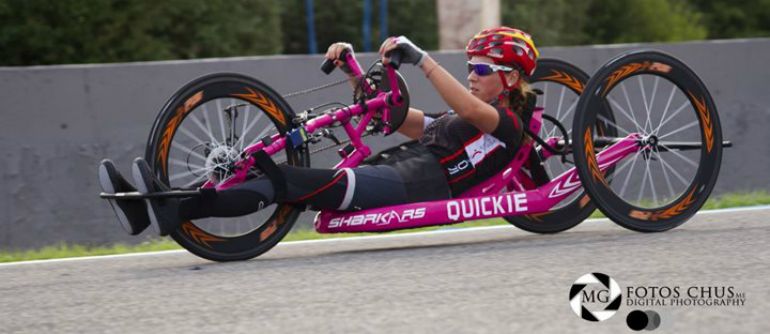A relatively new addition to the exciting world of para-sport, the Paratriathlon first entered the Paralympic scene in Rio de Janeiro, Brazil in 2016 and is only set to grow as more athletes develop a passion for the sport.

As if one branch of athleticism wasn't enough, Paratriathlon competitors are required to demonstrate incredible endurance, strength, and determination across three grueling legs. First, para-athletes have to swim a distance of 750 meters (0.47 miles). Then, they move on to a 20-kilometer (12.4 miles) bike ride (handcycle/tandem), before finishing with a 5-kilometer (3.1 miles) run (wheelchair). With its short distance, the Paratriathlon is understood as a sprint triathlon. All participants must have a high level of mental and physical fitness and preparedness in order to complete the race successfully.
Eligibility and Categories
Governed by the International Triathlon Union (ITU), the Paratriathlon is divided into men's and women's categories and if further categorized on the basis of disability. To be eligible to compete, participants must have a diagnosed vision or physical impairment.
The ITU uses a comprehensive 'Profiles System' to ethically and fairly define levels of functional ability, scoring across three different categories (strength, mobility, and neurosensory coordination), with 0 being the lowest measure of each range, and 5 the highest. Athletes' final scores correspond to the left arm, neck, right arm, left leg, torso, and right leg, respectively. This helps to classify the main disability with reference to the area of the body it primarily affects, ensuring a level playing field for all Paratriathlon competitors.
The ITU's six competition categories are arranged in response to these results, and this informs the categories and ways in which the athletes can and will compete. For example, the use of propulsive and/or flotation devices is generally not permitted during the Paratriathlon swimming leg, while the cycling leg requires that bicycles of any type must always be be propelled by their rider, using arms or legs exclusively, as opposed to a combination of the two.

Paratriathlon Categories
PT1
Wheelchair users, including athletes with comparable activity limitation and impairment of, but not limited to, muscle power, limb deficiency, hypertonia, ataxia, or athetosis, preventing the ability to safely run or ride a conventional bicycle. Through classification assessment, athletes must score up to 640.0 points. Athletes must use a recumbent handcycle during the bike leg and a racing wheelchair for the run course.
PT2
Athletes with comparable activity limitation and impairment of, but not limited to, limb deficiency, hypertonia, ataxia, athetosis, or impaired muscle power/range of movement, scoring up to 454.9 points through classification. During bike and run legs of the Paratriathlon, amputee athletes may use an approved prosthesis or other supportive devices.
PT3
Athletes with comparable activity limitation and impairment of, but not limited to, limb deficiency, hypertonia, ataxia, athetosis, impaired muscle power/range of movement, scoring from 455.0 to 494.9 points through classification. Athletes may, during the bike and run segments, use an approved prosthesis or other supportive devices.
PT4
Athletes with comparable activity limitation and impairment of, but not limited to, limb deficiency, hypertonia, ataxia, athetosis, impaired muscle power/range of movement, scoring from 495.0 to 557.0 through classification. During the bike and run portions of the Paratriathlon, athletes are permitted to use an approved prosthesis or other supportive devices.
PT5
Athletes with total or partial visual impairment (IBSA/IPC defined sub-classes B1, B2, and B3). Includes athletes who are totally blind, who have no light perception in either eye, or have some light perception but are unable to recognizae the shape of a hand at any distance or direction (B1), and partially sighted athletes with a visual acuity of less than 6/60 or visual field of less than 20 degrees with best corrective vision (B2-B3). A guide of the same nationality and gender is necessary throughout the Paratriathlon race and athletes must ride a tandem during the bike portion.
More information on classifications can be found at triathlon.org.
Get Involved
The Paratriathlon is a fantastic sport for athletes not content to just one form of athleticism, giving them the opportunity to test their strengths in three different fields. Paratriathletes must be strong, committed, and enduring. They must be prepared to dedicate themselves to the sport, training hard and preparing for a complex and difficult course. While our best and greatest test their strengths on the world stage, beginning athletes can also try their hand and get involved. The sport has no age limit and welcomes budding new competitors.
If you'd like to get involved, you can:
- Enter a short distance enticer/novice race
- Enter as a member of a two- or three-person team
- Join your local triathlon club
- Get involved in training or skills development courses
- Support family and friends
You can find paratriathlon events near you on the official Paratriathlon website.
Most of the stories here on LiveQuickie.com were submitted by readers. Do you have a story to tell? We'd love to hear it. Submit your story here.